In today’s fiercely competitive consumer markets, an overwhelming 85% of companies now view customer experience as their battleground (Source: Forbes, 2023). This shift highlights a fundamental challenge within contact centres: the task of addressing customer emotions. This is where sentiment analysis comes into play, a crucial tool that quantifies and interprets customer feelings in the heat of interaction. By embedding sentiment analysis into their core operations, contact centres can revolutionise how they engage with customers. This enables reactive and proactive responses, paving the way for empathy, improved efficiency, and an acutely customer-focused strategy. This guide looks into how sentiment analysis is redefining contact centre operations, turning them into dynamic, intuitive hubs that don’t just hear but truly understand customer voices.
What is Sentiment Analysis and How Does it Help in Contact Centres?
Sentiment analysis, also known as opinion mining, is a powerful technique used in contact centres to understand and analyse the sentiment expressed by customers in their interactions. By leveraging natural language processing, machine learning, and artificial intelligence, sentiment analysis technologies can categorise customer conversations and determine their sentiment.
This technique assigns sentiment scores to customer interactions, helping contact centres gain valuable insights into customer satisfaction, emotions, and issues. By analysing sentiment, contact centres can identify trends, patterns, and areas for improvement, enabling them to provide better customer service, enhance agent performance, and ultimately cultivate positive customer experiences.
Sentiment analysis is particularly helpful in dealing with complex issues, difficult customers, and customer dissatisfaction, as it allows contact centres to address individual concerns in real-time and personalise experiences based on customer sentiment.
With sentiment analysis tools, contact centres can proactively monitor customer sentiment across various channels, such as calls, chats, emails, and social media, and take prompt action to resolve customer issues and foster customer loyalty.
Benefits of Sentiment Analysis in Contact Centres
By analysing customer interactions and conversations, sentiment analysis tools provide valuable insights to increase sales and improve customer satisfaction. Some key benefits are:
Up-sell and cross-sell opportunities
By analysing customer sentiment, contact centre agents can identify positive experiences and tailor their approach to offer additional products or services that customers may be interested in, thereby increasing sales and revenue.
Prompt actions
Sentiment analysis helps in analysing negative feedback. By identifying patterns in customer dissatisfaction, contact centres can promptly address and rectify issues in products and services to meet customer expectations.
Improved script
By analysing sentiments associated with specific phrases or words, contact centres can identify areas where representatives may need additional training or where specific scripts need to be revised. This ultimately enhances the quality of customer interactions and improves customer satisfaction.
Locating Winning Points
Understanding what’s working with customers is another benefit of sentiment analysis. By examining positive sentiment, businesses can identify what aspects of their products, services, or customer interactions are resonating well with customers, allowing them to enhance these aspects further and drive customer loyalty.
Automated Agent Scoring
One of the key benefits of automation in contact centres is automated agent scoring. This powerful tool uses advanced algorithms to evaluate agent performance based on metrics such as call handling time, customer satisfaction ratings, and script adherence. By automating this process, contact centres can accurately gauge agent performance, identify top performers, and pinpoint improvement areas. This not only helps reward and motivate top-performing agents but also provides valuable coaching opportunities for those who require additional support.
Improved Agent Performance
In addition to automated agent scoring, speech analytics is crucial in improving agent performance. By analysing and interpreting customer-agent interactions, speech analytics tools help identify patterns and trends that can be used to optimise agent training. These tools can monitor tone, sentiment, and keywords to gauge customer satisfaction and identify areas where agents excel or struggle. This information can then be used to provide personalised coaching and training to enhance agent performance.
Real-time analytics
By monitoring calls in real-time, contact centres can ensure script compliance, detect potential issues, and provide immediate feedback to agents. Real-time analytics can also be used for quality assurance purposes, allowing managers to quickly identify and address any issues with customer interactions.
Earning Customer Loyalty
Sentiment analysis helps improve customer loyalty by creating positive experiences and de-escalating negativity. Contact centres can proactively resolve issues and turn potentially dissatisfied customers into loyal brand advocates by identifying and addressing negative customer sentiment.
Questions Sentiment Analysis Can Answer
- Do longer phone calls mean customers are happy or unhappy with the company?
- Are there specific people or teams in the company that always make customers very satisfied or unsatisfied?
- What do customers think about the latest advertisement?
- Do customers feel differently about different products?
- What are the common words used in calls when customers are happy or unhappy?
- On which day do customers usually feel the happiest? And on which day are they the most unhappy?
- Has there been any recent change in how customers feel about the company?
Technologies Used for Sentiment Analysis in Contact Centres
Natural Language Processing (NLP)
NLP algorithms process and understand human language, allowing contact centres to analyse customer interactions in real-time. NLP enables contact centres to identify both positive and negative sentiments expressed by customers, helping them address customer issues promptly and deliver personalised experiences. Aside from sentiment analysis, NLP can also be used to develop intelligent chatbots that can assist customers in real-time. These chatbots can be programmed to analyse customer queries, understand the intent behind them, and provide appropriate responses. This allows contact centres to automate routine support tasks and improve customer service efficiency.
By understanding and interpreting customer messages, NLP-powered systems can route calls to the most suitable agents, ensuring that customers are connected with experts who can effectively address their concerns. This improves the overall customer experience and reduces the time required to resolve issues.
Machine Learning (ML)
ML algorithms automatically learn from data and improve their performance over time. By training ML models on vast amounts of customer data, contact centres can develop sentiment analysis models that accurately predict customer emotions and sentiment scores. This helps businesses identify patterns and trends in customer conversations, improving agent performance and ultimately enhancing customer satisfaction.
Speech Analytics
Speech analytics tools are vital in analysing customer interactions and extracting valuable insights. These tools use natural language processing and machine learning algorithms to analyse keywords and phrases used during customer conversations. These tools provide contact centres with actionable insights into customer sentiment by identifying specific words and phrases that indicate positive or negative sentiment. For instance, by recognising negative customer sentiment, contact centres can immediately resolve issues, prevent customer dissatisfaction, and retain customer loyalty. Similarly, identifying negative agent sentiment allows contact centre managers to address any underlying concerns, improve agent performance, and enhance the overall customer service experience.
Measuring the Success of Sentiment Analysis in Contact Centres
Measuring the success of sentiment analysis in contact centres goes beyond simply identifying positive and negative sentiments. It involves evaluating the impact on customer satisfaction, agent performance, and overall customer experience.
Sentiment analysis utilises natural language processing and machine learning to evaluate customer interactions and determine sentiment. The resulting sentiment scores provide insights into customer experiences during agent interactions.
Analysing these scores allows contact centres to gauge satisfaction, identify negative sentiment patterns, and proactively address issues to improve customer experience. Sentiment analysis also enables targeted agent training by highlighting areas where agents struggle or encounter more negative sentiment.
In addition, contact centres can generate valuable insights from customer interaction data using text and audio mining to extract meaningful information from conversations, emails, and social media. These techniques help identify trends, preferences, and pain points.
Summarisation methods also play a key role by condensing lengthy interactions into concise summaries. This allows contact centres to swiftly identify key issues and sentiments to prioritise improvements and address concerns promptly.
Combining sentiment analysis and advanced data mining techniques provides actionable insights to enhance customer service, measure agent experience and performance, and overall customer experience.
Adopting Automated Solutions for Contact Centre Sentiment Analysis
Utilising AI-Powered Chatbots for Customer Interactions and Service
AI-powered chatbots are intelligent virtual agents designed to understand and respond to customer queries, provide solutions, and facilitate seamless experiences.
Chatbots have gained significant attention and interest in contact centre systems, especially following the COVID-19 pandemic. They emerged as a valuable solution, enabling contact centres to handle large volumes of customer inquiries efficiently without human intervention.
The benefits of utilising AI-powered chatbots
- 24/7 support and assistance
- Reducing wait times
- Improving response rates
- Optimised customer service
- Multiple conversions handling capacity
- Enhanced operational efficiency
However, designing accurate automatic models for customer intent detection in chatbot systems poses challenges. Understanding and interpreting customer inquiries accurately is crucial for providing effective solutions. Natural language processing and sentiment analysis technologies are employed to train these models, but there are instances where the machine learning algorithms may misinterpret customer intent, leading to unsatisfactory responses.
Key Features to Assess in a Contact Centre Sentiment Analysis Tool
Old methods and tools for understanding customer feelings could be faster and more consistent. You need a way to quickly and accurately gauge customer emotions with easy-to-read dashboards and reports.
Six Things to Consider While Choosing Sentiment Analysis for Contact Centre
- Is it designed for contact centres?
Remember, not all calls are negative. A good tool will understand the unique nature of contact centre conversations.
- Can it understand context?
Many tools can’t tell the difference between similar-sounding negative phrases. Choose a tool that looks at the whole conversation, not just single words or phrases.
- Does it require manual work?
A good tool should be easy to use and provide automatic updates to your dashboard or reports, saving you time.
- Does it help with Quality Management?
The best tool will identify your top-performing agents and teams based on sentiment, helping you share what works well and spot those needing more training.
- Can it link sentiment with other key performance indicators (KPIs)?
You want a tool that gives an overall sentiment score and lets you analyse this data alongside other key contact centre performance metrics like call duration, hold time, and customer effort scores.
- How accurate is it?
Choose a solution that takes the help of advanced machine learning and speech analytics to provide more reliable sentiment analysis than older tools.
Sentiment Analysis Solution for Contact Centres
Sentiment analysis in contact centres on 100% of all interactions fostering strong connections, uncovering growth opportunities and delivering exceptional service levels. It utilises natural language processing, machine learning and speech analytics to understand customer queries and conversations. It analyses each conversation’s sentiment, intent and emotional tone to provide quick and accurate responses that lead to happier customers and increased loyalty.
For agents, sentiment analysis detects trends and feelings in customer conversations to aid in targeted coaching. It also rates interactions based on predefined quality rules, allowing managers to identify areas for improvement through personalised training suggestions.
Real-time AI reporting and monitoring further empower leadership with actionable insights into agent performance, including emotional triggers and skill gaps uncovered through sentiment analysis. This enables data-driven decisions around staffing, scheduling, and coaching to enhance customer experience.




